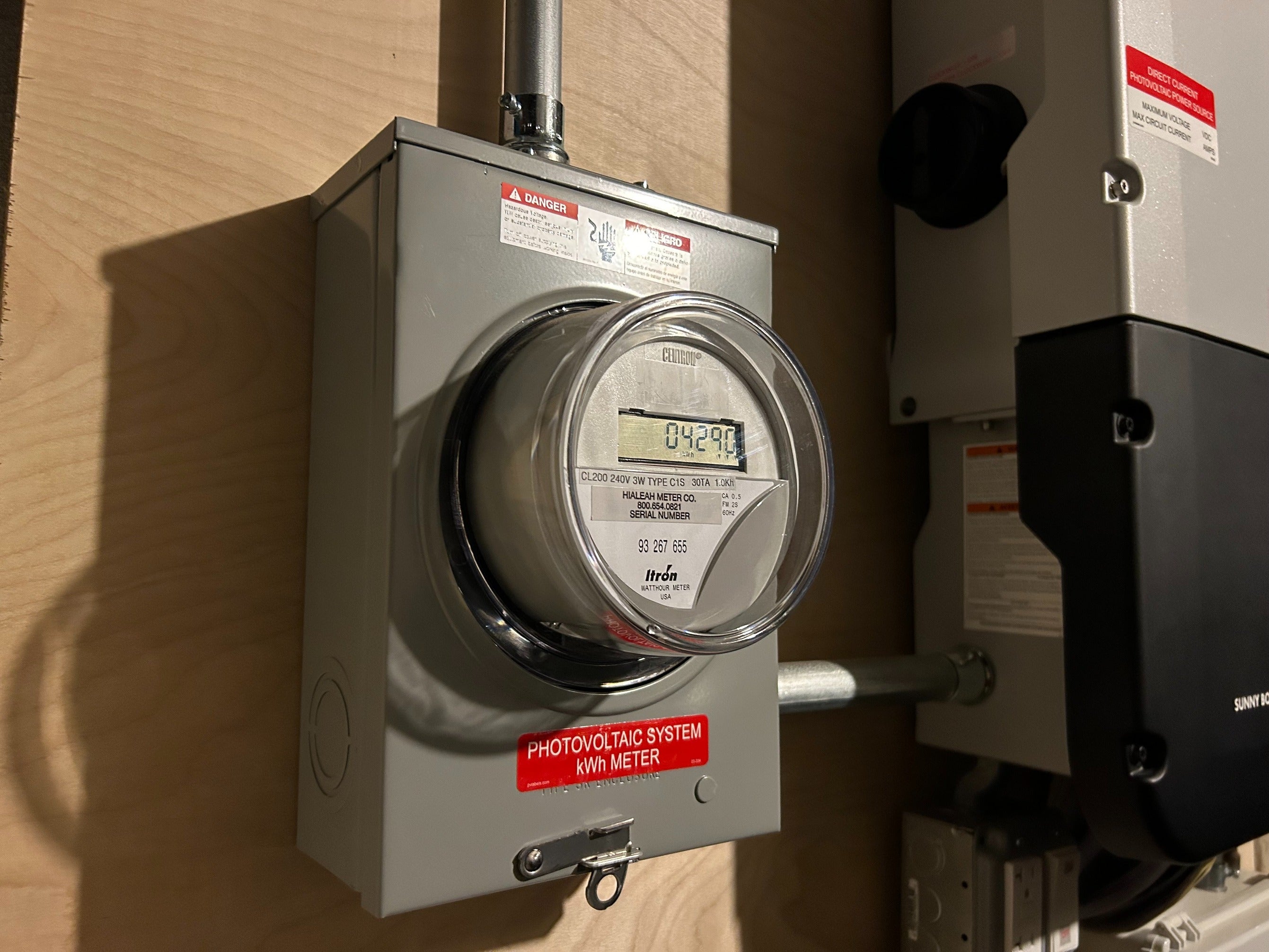Report on the European Union’s Green Transition and Alignment with Sustainable Development Goals
Introduction: Re-evaluating the Green Deal Amidst New Challenges
The European Union’s Green Deal is at a critical juncture, impacted by high energy prices, a shifting geopolitical landscape, and the imperative to maintain strategic autonomy. The current framework for the energy transition must be re-evaluated to ensure it reinforces a broader strategic vision that aligns with the United Nations’ Sustainable Development Goals (SDGs). This report outlines a proposed framework of five rules to guide the green transition, ensuring that climate action is pursued in a manner that is economically viable, technologically sound, and socially equitable.
A Proposed Framework for a Sustainable Green Transition
A revised strategy for the EU’s green transition is proposed, based on five core principles designed to integrate climate objectives with broader sustainable development priorities.
-
Focus on Cost-Effectiveness for Sustainable Economic Growth (SDG 8) and Affordable Energy (SDG 7)
- The transition strategy must prioritize cost-effectiveness to avoid imposing excessive burdens on economies and consumers. This supports SDG 7 (Affordable and Clean Energy) by ensuring energy remains accessible.
- Emphasis should be placed on scaling up low-carbon technologies that are already competitive, while developing nascent technologies at a sustainable pace.
- This approach protects economic stability and industrial competitiveness, which is fundamental to achieving SDG 8 (Decent Work and Economic Growth).
-
Embrace Technological Neutrality to Foster Innovation (SDG 9) and Clean Energy (SDG 7)
- Policy and investment decisions must be based on a technology’s ability to deliver emissions reductions, rather than on ideological preferences.
- Support should be allocated impartially across a range of viable technologies, including transitional fuels like natural gas, hydrogen, and nuclear power, to build a resilient and diverse energy system.
- This fosters a climate of innovation essential for SDG 9 (Industry, Innovation, and Infrastructure) and provides multiple pathways toward achieving SDG 7.
-
Strengthen the Internal Market to Reduce Inequalities (SDG 10) and Ensure Energy Access (SDG 7)
- Significant electricity price disparities across the EU highlight the need for deeper market integration. A fragmented market undermines energy security and creates economic imbalances.
- A unified internal energy market is a political imperative to stabilize prices, ensure equitable distribution, and prevent market inefficiencies.
- Achieving this goal directly addresses SDG 10 (Reduced Inequalities) among member states and reinforces the objective of universal access to affordable energy under SDG 7.
-
Implement Stronger Market Governance for Stable and Just Institutions (SDG 16)
- The growing complexity and opacity of energy markets require enhanced governance to protect consumers and ensure fair competition.
- A robust European-level framework is needed to monitor price setting and prevent market manipulation, thereby increasing transparency and accountability.
- This aligns with the principles of SDG 16 (Peace, Justice, and Strong Institutions) by building trustworthy and effective market structures.
-
Adopt an Integrated Approach Balancing Climate Action (SDG 13) with Socio-Economic Goals (SDG 8, SDG 9)
- Decarbonization, while vital, cannot be the sole objective of EU policy. It must be integrated with other critical goals such as employment, industrial production, and social cohesion.
- The pursuit of SDG 13 (Climate Action) must not undermine progress on SDG 8 (Decent Work and Economic Growth) and SDG 9 (Industry, Innovation, and Infrastructure).
- A balanced approach requires honest debate and a willingness to make pragmatic trade-offs to ensure the green transition is just and sustainable for all sectors of society.
Strategic Conclusion: A New Agenda for Sustainable Development
Adherence to these five rules provides a radical yet necessary agenda for the EU’s green transition. This framework ensures that the race to achieve climate neutrality is synergistic with the broader 2030 Agenda for Sustainable Development. By integrating climate objectives with economic, social, and institutional goals, the EU can lead a transition that is not only environmentally effective but also economically resilient and socially inclusive.
Analysis of Sustainable Development Goals in the Article
1. Which SDGs are addressed or connected to the issues highlighted in the article?
-
SDG 7: Affordable and Clean Energy
The article is centered on the energy transition, discussing high energy prices, the need for cost-effective low-carbon technologies (including renewables, nuclear, and hydrogen), and the integration of European electricity markets. This directly relates to ensuring access to affordable, reliable, sustainable, and modern energy.
-
SDG 13: Climate Action
The entire context of the article is the EU’s “Green Deal” and the goal of achieving “climate neutrality.” It explicitly discusses strategies for “decarbonisation” and achieving “lower emissions,” which are the core objectives of taking urgent action to combat climate change.
-
SDG 9: Industry, Innovation, and Infrastructure
The author expresses concern about the impact of the green transition on industrial competitiveness, advocating to “save our industries.” The article also calls for “technological neutrality” and scaling up competitive technologies, which relates to fostering innovation and building resilient infrastructure.
-
SDG 8: Decent Work and Economic Growth
The article warns against burdening economies with high costs and emphasizes that goals like “employment” and “industrial production” should not be sacrificed for decarbonization. This highlights the need to promote sustained, inclusive, and sustainable economic growth.
-
SDG 17: Partnerships for the Goals
The call to rededicate to the EU’s “internal market” and push for market integration “at the highest levels” points to the need for strengthening regional partnerships. The overarching argument for a balanced strategic framework for the EU is a call for greater policy coherence for sustainable development.
2. What specific targets under those SDGs can be identified based on the article’s content?
-
SDG 7: Affordable and Clean Energy
- Target 7.1: Ensure universal access to affordable, reliable and modern energy services. This is implied by the concern over “high energy prices” and the “madness” of price disparities where one country has negative prices while another has “prices in the triple digits.”
- Target 7.2: Increase substantially the share of renewable energy in the global energy mix. This is addressed through the discussion of scaling up “low-carbon technologies” as part of the decarbonization effort.
- Target 7.a: Enhance international cooperation to facilitate access to clean energy research and technology… and promote investment in energy infrastructure and clean energy technology. The call for “technological neutrality” (supporting nuclear, gas, hydrogen) and the push for electricity “market integration” align with this target.
-
SDG 13: Climate Action
- Target 13.2: Integrate climate change measures into national policies, strategies and planning. The article is a direct proposal on how to better integrate the Green Deal (a climate change measure) into the EU’s broader strategic framework, balancing it with economic and social objectives.
-
SDG 9: Industry, Innovation, and Infrastructure
- Target 9.2: Promote inclusive and sustainable industrialization. The author’s argument that “we must accept some emissions for a bit longer to save our industries” directly addresses the challenge of ensuring industrialization remains sustainable without collapsing.
- Target 9.4: Upgrade infrastructure and retrofit industries to make them sustainable. The mention of decarbonizing “the most difficult industrial processes” and scaling up low-carbon technologies speaks to this target.
-
SDG 8: Decent Work and Economic Growth
- Target 8.4: Improve progressively… global resource efficiency in consumption and production and endeavour to decouple economic growth from environmental degradation. The article’s central theme is finding a pragmatic and “cost-effective” way to manage this decoupling without harming “employment” or “industrial production.”
-
SDG 17: Partnerships for the Goals
- Target 17.14: Enhance policy coherence for sustainable development. The author’s core argument is that “decarbonisation is vital but it is not the only objective” and must be balanced with other goals like strategic autonomy and social cohesion, which is a direct call for policy coherence.
3. Are there any indicators mentioned or implied in the article that can be used to measure progress towards the identified targets?
-
For SDG 7:
- Energy Prices: The mention of “high energy prices” and “prices in the triple digits” implies that the price of electricity and other energy sources is a key indicator of affordability (Target 7.1).
- Share of Low-Carbon Technologies: The discussion of scaling up low-carbon technologies implies that their share in the energy mix is a relevant metric for progress (Target 7.2).
-
For SDG 13:
- Greenhouse Gas Emissions Levels: The goal of achieving “lower emissions” and “climate neutrality” directly points to the total volume of greenhouse gas emissions as the primary indicator (Target 13.2).
-
For SDG 9:
- Level of Industrial Production: The explicit goal to “save our industries” and maintain “industrial production” suggests that manufacturing output or value-added would be a key indicator to monitor (Target 9.2).
-
For SDG 8:
- Employment/Unemployment Rate: The article explicitly names “employment” as a key objective that should not be sacrificed, making it a critical indicator for ensuring a just transition (Target 8.4).
- Economic Competitiveness/Growth: The concern about not burdening “our economies with additional costs” and maintaining “Europe’s competitiveness” implies that GDP growth and competitiveness indices are important measures of success (Target 8.4).
-
For SDG 17:
- Degree of Market Integration: The call to overcome “enormous price disparities” through market integration suggests that the level of integration and convergence of energy prices across the EU is an indicator of partnership effectiveness (Target 17.14).
Summary Table of SDGs, Targets, and Indicators
| SDGs | Targets | Indicators (Mentioned or Implied) |
|---|---|---|
| SDG 7: Affordable and Clean Energy | 7.1: Ensure access to affordable energy. 7.2: Increase the share of renewable energy. |
– Price of electricity and energy. – Share of low-carbon technologies in the energy mix. |
| SDG 13: Climate Action | 13.2: Integrate climate change measures into policies and strategies. | – Total greenhouse gas emissions levels. |
| SDG 9: Industry, Innovation, and Infrastructure | 9.2: Promote sustainable industrialization. 9.4: Upgrade industries to make them sustainable. |
– Level of industrial production and manufacturing output. |
| SDG 8: Decent Work and Economic Growth | 8.4: Decouple economic growth from environmental degradation without harming the economy. | – Employment/unemployment rate. – Economic competitiveness and GDP growth. |
| SDG 17: Partnerships for the Goals | 17.14: Enhance policy coherence for sustainable development. | – Degree of energy market integration and price convergence in the EU. |
Source: ft.com






